How to Buy the Best In-Food And In-Cooker Thermometer
Published On: 9/27/2019 Last Modified: 6/16/2025

Click Here To Search 200+ Thermometers Tested, Rated, and Reviewed
In addition to the must-have instant read thermometer, an in-food/in-cooker (IFIC) thermometer (a.k.a. remote thermometer, wireless thermometer) should be part of every chef’s collection of tools.
Why have both, you might ask? While the instant read might provide the final say as to doneness, the in-food/in-cooker unit provides a real-time progress report on the status of the cooking session. An instant read cannot be left inserted in the food while it is cooking, so you only have a readout while you’re inserting the probe into the food. An IFIC, on the other hand, remains inserted during the entire cooking session, displaying the temperatures of the food(s) and the cooker simultaneously.
While all IFICs do pretty much the same thing – display real-time temperatures measured by cabled probes – they differ in how they present the information to the cook. At the most basic level, the temperature of one or more probes is displayed on a control box into which the probe cables plug. This is adequate if the cooker is located in close proximity to the cook. If not, there are several varieties of wireless remote units available. Some come with a dedicated remote that communicates with the control box.
Others communicate with a smart phone via Bluetooth, but range can be a problem. At the highest level, the control box communicates with the cook’s Wi-Fi router, making the temperature data available, via the cloud, on a smart device or browser anywhere an internet connection is available. Your proximity to the cooker and how immediately you need temperature feedback will determine which of these categories is most appropriate for your needs.
Some IFICs have only a single temperature probe and others have six or eight. It’s nice to have a readout of the cooker’s temperature in addition to the food’s temperature, especially if you’re dealing with a smoker whose temperature might vary considerably over a long period. With the cooker’s temp covered, ask yourself how many pieces of food you’ll want to monitor, and use that as a guide to how many probe channels you’ll need.
All IFICs that I’ve seen allow you to set alarms, frequently an upper and lower value, that will alert you to wayward cooker temps or food nearing completion. Most alarms are an audible/visual signal displayed on the control box, the remote, or on your smartphone. Many units have pre-programmed temperature values for different levels of doneness for different types of meat or you can set your own values. Most pre-programmed temperatures conform to the USDA standards, values that would usually result in overcooked food. The choice is yours. For an overview of safe doneness temperatures, see our award-winning temperature guide here.
Most smartphone apps present the same info: temperature, alarm settings, and a temperature vs. time graph for each probe. The graphs are helpful in determining the onset of the stall. Some are more intuitive to navigate than others. Many allow you to save or download the graphical data; you’ll have to decide how important that is to you. (I use such data when testing thermostatic controllers.)
Most IFICs operate on batteries, although some require an AC power source. Think about the availability of power at your cooker if considering the latter category.
As with instant reads, quality of construction and resistance to moisture are considerations. Cheaper units often aren’t designed and built to survive a rainstorm, something to think about if you’re planning to use the control box outdoors.
Prioritize your needs then use our database to find a highly-rated product to fill them.
Tappecue Touch And Airprobe2 Bundle Review
Read our review of the Airprobe2 for use with the Tappecue Touch that exhibits excellent accuracy in a wireless "smart" thermometer probe.Yummly Wireless Meat Thermometer Review
Read our review of the Yummly Wireless Meat Thermometer. It simultaneously measures temperatures and communicates this info to your phone.MeatStick X Wireless Food Thermometer Review
Read our review of the MeatStick X, a thermometer that simultaneously measures temperatures and communicates info to your smart phone.Meatstick Wi-Fi-Bluetooth Food Thermometer Review
The Meatstick Wi-Fi-Bluetooth Food Thermometer is a tool that allows a wireless temperature probe to communicate with a smart phone.Meater Block Food Thermometer Review And Rating
The Meater Block is a novel approach to the wireless temperature measurement product category. Read our review to learn more.CookPerfect Comfort Review
Read our review of the CookPerfect Comfort Bluetooth wireless thermometer that got a Silver Medal for its clean design and user-friendly app.Govee H5055 Bluetooth Meat Thermometer Review
See our review of the Govee H5055 Bluetooth Meat Thermometer, a Silver Medal winner for its clean design, ease of use, and good performance.Meatrix Model 101 Review
Read our review of the Meatrix Model 101 system, a cooking thermometer that employs a menu-driven approach to cooking food.Maverick XR-40 Review
Read our review of the new Maverick XR-40, a two-channel wireless remote thermometer that boasts an extended range of up to 500 feet (152m).ThermoWorks Signals Review
Read our review of the new ThermoWorks Signals, a four-channel Bluetooth/Wi-Fi-enabled remote thermometer, a Gold Medal Winner.Tappecue Touch Review
See our complete review of the Tappecue Touch, a four-channel, Internet-enabled wireless food thermometer, that got a Gold Medal.Maverick XR-50 Remote Four-Probe Thermometer Review
The Maverick XR-50 is a remote food and cooker thermometer. It wins a solid top rating for performance and construction.Blameless Cooking EasyBBQ Wireless Thermometer Review
Read our in-depth analysis of the Blameless Cooking EasyBBQ Thermometer whose performance and build quality earned it a Silver Medal.Tegam 931B Data Logging Thermometer Review
See our review of the Tegam 931B Data Logging Thermometer, an industrial grade tool for temperature collection that we awarded a Gold Medal.ThermoPro TP-12 Dual Probe Remote Thermometer Review
Read our review of the ThermoPro TP-12, a dual-channel remote food/cooker thermometer with good performance at a low price.ThermoPro TP-11 Remote Food Thermometer Review
Read the full review of the ThermoPro TP-11, a wireless remote food thermometer with good accuracy that we awarded a Bronze Medal.ThermoPro TP-21 Remote Thermometer Review
The ThermoPro TP-21 is a single-probe wireless remote thermometer with user-programmable alarms and USDA-approved temperature settings.ThermoPro TP-08 Remote Dual-Probe Thermometer Review
Read our full review of the ThermoPro TP-08S, a dual-probe, wireless remote food and cooker thermometer. We give this unit a Bronze Medal.ThermoPro TP-22 Remote Dual-Probe Thermometer Review
Read our review of the ThermoPro TP-22, a dual-probe wireless remote thermometer with user-programmable alarms and a timer function.ThermoPro TP-17 Dual-Probe Thermometer Review
Read our complete review of the ThermoPro TP-17, a dual-probe food thermometer with an up/down timer function.Auber SYL-1615SYS-W Review
Read our comprehensive review of the Auber SYL-1615SYS-W thermostatic controller that we gave a Gold Medal for its ease of use.BBQ Guru CyberQ Cloud Review
The CyberQ Cloud is BBQ Guru's new entry into the thermostatic controller market intended for use on grills or smokers. It gets our top ratingInkBird IBT-4XS Review
Read our review of the InkBird IBT-4XS, a four-channel, Bluetooth-enabled wireless thermometer that communicates with smartphone apps.G&C Ltd. GrillEye Review
See our comprehensive review of the GrillEye, a six-channel, Bluetooth-enabled cooking thermometer that comes with two included probes.Morpilot Smart BBQ Meter Pro Review
Here is our review of the Morpilot, a six-channel remote thermometer that communicates with a smartphone application via Bluetooth.ThermoWorks ThermaQ Wi-Fi Review
Read our full review of the ThermoWorks ThermaQ Wi-Fi. We give this a Gold Medal for its quality construction, features, and flexibility.ThermoWorks ThermaQ Blue Kit Review
Read our review of the ThermoWorks ThermaQ Blue Kit. This unit has improved range over earlier Bluetooth units and gets a Gold Medal.ThermoPro TP-20 Remote Thermometer Review
Read the complete review of the ThermoPro TP-20 Remote Thermometer, a two-probe, wireless remote reading thermometer with a timer function.Maverick ET-736 Wi-Fi Roasting Thermometer Review
Read our review of the ET-736, Maverick’s latest entry into the thermometer market, and follows the successful ET-732 and ET-733 models.FireBoard FBX11 Review
FireBoard set a new standard in food thermometry. It is a remote read, cloud connected, data logger, with connections for up to six probes.BBQube 5X Family of Probes Review
Read our review of these replacement probes for the Maverick ET-732/733. We give them a Bronze medal for accuracy and decent construction.ThermoWorks Smoke Review
The ThermoWorks "Smoke," is a two-channel, in-food/in-oven, wireless remote thermometer that is well made, easy to use, and performs well.ThermoPro TP-10 Digital Thermometer Review
Read our comprehensive review of the ThermoPro TP-10, a single-channel food thermometer with good accuracy at a good price.ThermoPro TP-06 Digital Thermometer Review
Read our full review of the ThermoPro TP-06, a single-channel food thermometer with good accuracy at a good price. We give it a Silver Medal.ThermoPro TP-16 Digital Thermometer Review
Here is our analysis of the ThermoPro TP-16, a single-channel food thermometer with good accuracy at a good price. We gave it a Bronze Medal.ThermoPro TP-04 Digital Food Thermometer Review
Here is our review of the ThermoPro TP-04, a single-channel food thermometer with good accuracy at a good price. We gave it a Bronze Medal.ThermoPro TP-07 Remote Food Thermometer Review
See the full review of the ThermoPro TP-07, a single-channel wireless remote food thermometer with good accuracy at a good price.ThermoPro TP-09 BBQ/Grill/Cooking Thermometer Review
Here is the complete review of the ThermoPro TP-09, a single-probe wireless remote thermometer designed to measure food temperatures.Cappec Glow KTH06 Review
See our review of the Cappec "Glow" KTH06, a single channel leave-in food thermometer with a timer feature that merits a Bronze Medal.Rock’s Bar-B-Que Stoker II Review
Read our review of the Rock's Stoker II, an improved version of the original Stoker with new features and much better performance.Engelbrecht 10776-03290 Review
Read our detailed review of the Engelbrecht 10776-03290, a very accurate dial thermometer intended to read cooker temperature.ThermoWorks ThermaQ Review
Here's the full report on the ThermoWorks ThermaQ. We gave this a Gold Medal for its rugged construction, versatility, and performance.Maverick ET-735 Review
Read our review of the Maverick ET-735, a four-channel, Bluetooth-enabled wireless thermometer. We gave it a Gold Medal for its performance.Supermechanical Range Temperature Probe Rating And Review
See our review of the Supermechanical Range temperature probe that is designed to work with later iPhones and performs acceptably.AW131 Talking Thermometer Review
See our complete review of the Oregon Scientific AW131 Talking Thermometer, an attractive remote thermometer that performs as advertised.Smart Thermometer Review
See our review of the Williams-Sonoma Smart Thermometer, a Wi-Fi connectable thermometer that can also be used in a stand-alone mode.Pitmaster IQ110 Review
Read our analysis of the Pitmaster IQ110, a straightforward temperature controller for charcoal grills and smokers. We gave it a Bronze Medal.BBQ Guru CyberQ WiFi Review
See our detailed test and evaluation of the BBQ Guru CyberQ WiFi thermostatic controller that received a Gold Medal for its full feature set.BBQ Guru DigiQ Review
See our review of the BBQ Guru DigiQ DX2, a thermostatic controller for charcoal or wood cookers with an extra probe to monitor food temps.Auber SYL-2615 Thermostatic Controller Review
Auber Instrument's latest entry into the barbecue temperature controller market is the SYL-2615. It gets our top rating.BBQ Guru PartyQ Review
Read the full review of the BBQ Guru PartyQ, a temperature regulator for charcoal cookers that holds the temperature constant while cooking.Fluke 87 V Multimeter Review
See our review of the Fluke 87 V multimeter that has a temperature probe that can be used for cooker temps, or food with other probes.Weber iGrillmini Review
Read our review of the Weber iGrillmini, a small Bluetooth device that communicates with a smart device like an iPhone or iPad.Tappecue Four Channel Temperature Monitor Review And Rating
Read our analysis of the Tappecue, an innovative product for monitoring up to four temperatures anywhere Internet access is available.Cappec NS-BTH01 Review
Read our complete review of the Cappec NS-BTH01, Bluetooth-enabled digital thermometer that works with Apple and Android products.Weber iGrill2 Bluetooth Remote Thermometer Review
Read our review of the iDevices iGrill2, a Bluetooth-enabled remote thermometer that has two probes and is accessed using your smartphone.Cooper DTT361 Cooking Thermo-Timer Review
Here is the complete review of the Cooper DTT361, a compact leave-in food/cooker thermometer with a clock/timer function.ThermoWorks Semi-Pro BBQ Kit Review
Read our review of the ThermoWorks Semi-Pro BBQ Kit, a setup for serious cooks who want quality and value. It's a Gold Medal winner.ThermoWorks Pro BBQ Kit by AmazingRibs.com Review
Even though this kit has been discontinued, read the review of the complete thermometer kit for the serious cook.Weber iGrill Cooking and Barbecue Thermometer With Dual Probes Review
See our review of the iDevices iGrill Cooking and Barbecue Thermometer with dual probes, a Bluetooth-enabled unit that received a Silver MedaliCelsius BBQ And Cooking Thermometer Review
Read our review of the iCelsius BBQ and Cooking Thermometer, an accessory for some Apple iPhones that won a Gold Medal.iCelsius Wireless BBQ Review
Read our complete review of the Gold Medal-winning iCelsius Wireless, a Wi-Fi connected thermometer that communicates with smart devices.Tel-Tru MT39R Dial Thermometer Review
Read our full review of the Tel-Tru MT39R, a dial thermometer intended for food temp measurement. We give it a Silver Medal for its accuracy.Tel-Tru BT275R Dial Thermometer Review
Read our review of the Tel-Tru BT275R, a dial thermometer intended for food temp measurement that can be left in food in the oven/cooker.Tel-Tru GT100R Dial Thermometer Review
The Tel-Tru GT100R is a dial thermometer intended for food temp measurement. We give it a Silver medal for its accuracy and simplicity.Tel-Tru LT225R Dial Thermometer Review
Read our complete review of the Tel-Tru LT225R, an accurate dial thermometer intended for temp measurement that can be left in the cooker.Tel-Tru BQ300 Barbecue Grill Thermometer Review
Here's a look at the Tel-Tru BQ300 Barbecue Grill Thermometer, an accurate instrument intended to replace the units found on many grills.Weber 9815 – Dial-type Thermometer Review
Read our review of the Weber 9815, an in-oven/in-meat dial thermometer is an accurate but slow-to-respond unit. We gave it a Bronze Medal.Polder 362-90 Digital In-Oven Thermometer with Timer Review
Read the complete review of the Polder 362-90 Digital In-Oven Thermometer, a thermometer/timer that has basic features and good accuracy.Weber 6741 Wireless Two-Probe Thermometer Review
Here is a complete review of the Weber 6741, a nicely-made, easy to use dual-probe remote thermometer with good accuracy, range and utility.Polder 362-86 Digital In-Oven Thermometer with Timer Review
Read our review of the Polder 362-86 Digital In-Oven Thermometer, a thermometer/timer that has basic features and good accuracy.Weber 6742 Barbecue Thermometer Review
Click here to read the full review of the Weber 6742, a well-made, attractive leave-in thermometer with excellent accuracy and nice featuresThermoWorks Y-232-101 Therma Waterproof Kit Review
Here is our complete review of the ThermoWorks Y-232-101 Therma Waterproof, a rugged, industrial-grade rapid read thermometer.Maverick ET-71 Remote Wireless Cooking Thermometer Review
Read the review of the Maverick ET-71, an inexpensive single-probe remote thermometer that has reasonable accuracy and response times.ThermoWorks OT200D Oven Dial Thermometer Review
Read our review of the ThermoWorks OT200D, an inexpensive dial thermometer that is too inaccurate to be of any use.Maverick ET-72 Deluxe Single Probe Remote Review
Here is the complete review of the Maverick ET-72, an inexpensive single-probe remote thermometer. We gave it a Bronze Medal.ThermoWorks Therma K Plus with 313-158 Probe Review
Read our complete review of the ThermoWorks Therma K Plus Kit, an expensive thermometer that exhibits superb accuracy and response times.Maverick ET-73 Remote Smoker Thermometer Review
Read our complete review of the Maverick ET-73, a nicely made two-probe remote unit that tracks food and smoker temperatures.ThermoWorks MicroTherma 2K with 303-159 Probe Review
Read our full analysis of the ThermoWorks MicroTherma 2K, a high-accuracy unit that accepts any K-type thermocouple.Maverick ET-7 Dual Probe Remote Review
Read the full review of the Maverick ET-7, a two-probe remote unit that has some interesting features, fair accuracy, and a few glitches.Maverick ET-732 Redi-Check Review
The Maverick ET-732 is a dual-probe, remote thermometer used to monitor both barbecue and food temperatures. We gave it our top rating.ThermoWorks ChefAlarm (TX-1100-XX) Review
The Thermoworks Chef Alarm is a leave-in thermometer. It gets a top rating for its construction, features and performance.Maverick ET-84 Voice Alert Anticipation Thermometer Review
Here is our review of the Maverick ET-84, an inexpensive unit with limited temperature range and voice alerts to warn of food readiness.ThermoWorks TW8060 Review
Read our review of the DISCONTINUED ThermoWorks TW8060, a two-channel display that works with external probes. It earns a Silver Medal.Maverick ET-8 Single Probe Thermometer Review
Read our complete review of the Maverick ET-8, an inexpensive meat probe thermometer that performs well and has several innovative features.ThermoWorks BlueTherm Duo (292-601) Review
Read our review of the BlueTherm Duo, a two-channel, Bluetooth-enabled display that works with external probes.Maverick ET-83 Dual Probe Oven Roasting Thermometer Review
Read our review of the Maverick ET-83, a two-probe thermometer with two independently-alarmed temperature settings but limited range.Maverick ST-100 Chef Tunes Review
Here is the full review of the ST-100 Chef Tunes, an unusual product with a thermometer, music player and telephone in one counter-top unit.Polder THM-550N Oven Thermometer – Dial Review
Here's our review of the Polder THM-550N, an inexpensive dial-type oven thermometer that displayed good accuracy. We gave it a Bronze Medal.Maverick ET-733 Redi-Check Review
See the complete review of the ET-733 Redi-Check, a dual-probe transmitter/receiver designed for monitoring from a remote location.Polder THM-570 Grill Surface Thermometer Review
Here is our review of the Polder THM-570, an unusual thermometer designed to be placed on a grill to determine cooking surface temperature.AcuRite 00278 Review
Read our complete review of the AcuRite 00278, a transmitter/receiver pair that will monitor food temperature or announce a countdown timer.Polder 12454 In-Oven Thermometer Review
Read our full review of the Polder 12454, a dial-type leave-in-food thermometer that has good accuracy and a very readable display.BradleySmoker BTDIGTHERMO Review
See our review of the Bradleysmoker BTDIGTHERMO, a relatively inexpensive in-food thermometer with a number of operating modes.Polder 307T Preprogrammed Cooking Thermometer Review
Read our review of the Polder 307T, a thermometer with hinged readout, pre-programmed temperatures, and pre-done warning alarms.Weber 9815 – Dial-type Thermometer Review
Read our review of the Weber 9815, an in-oven/in-meat dial thermometer is an accurate but slow-to-respond unit. We gave it a Bronze Medal.Polder 362-90 Digital In-Oven Thermometer with Timer Review
Read the complete review of the Polder 362-90 Digital In-Oven Thermometer, a thermometer/timer that has basic features and good accuracy.Weber 6741 Wireless Two-Probe Thermometer Review
Here is a complete review of the Weber 6741, a nicely-made, easy to use dual-probe remote thermometer with good accuracy, range and utility.Polder 362-86 Digital In-Oven Thermometer with Timer Review
Read our review of the Polder 362-86 Digital In-Oven Thermometer, a thermometer/timer that has basic features and good accuracy.Maverick ET-85 Roasting Digital Thermometer with Timer Review
Here is the complete review of the Maverick ET-85, an inexpensive unit that has a unique probe that measures both the oven and the food temp.ThermoWorks PT1438 Dial Thermometer Review
Here is our review of the ThermoWorks PT1438 Dial Thermometer that has good accuracy and a long probe for in-oven/in-food measurements.ThermoWorks TW362B Cooking Thermometer/Timer Review
See our complete review of the ThermoWorks TW362B Thermometer/Timer. Although this unit is discontinued, it got a Gold Medal while availableRelated articles
- Best Cooking Thermometers, 200+ Lab Tested And Reviewed (4 Pages, 1 Article)
- Best Wireless Thermometers: Pros, Cons, and What To Look For

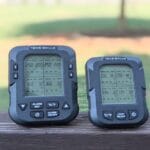
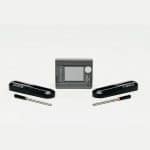
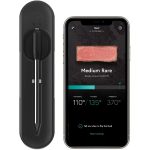
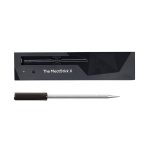
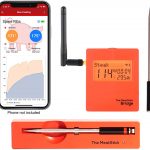
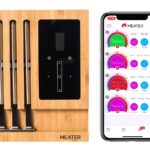
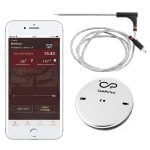
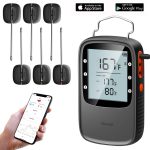


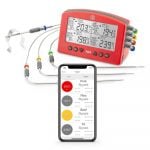
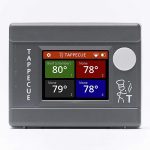

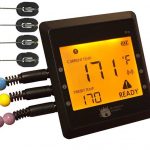
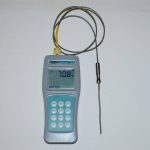
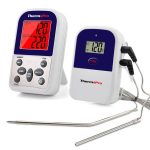
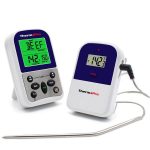
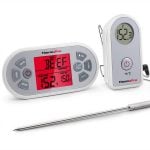
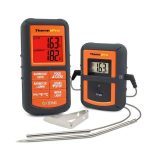
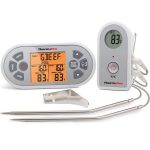
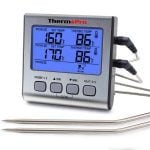

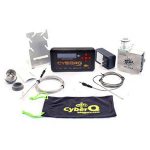
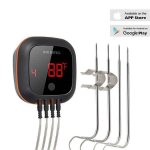
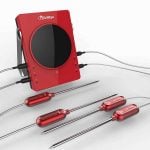
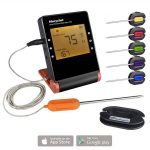
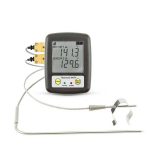
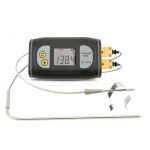

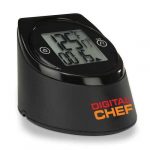
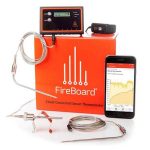
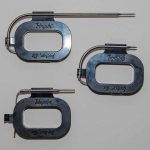

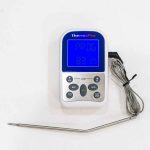
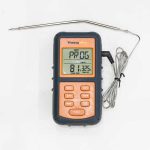
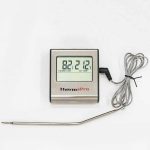

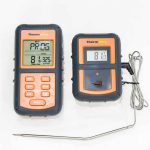
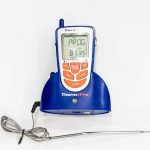
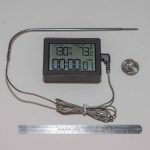
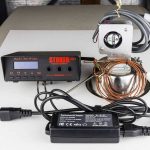
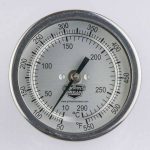
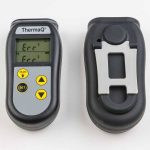

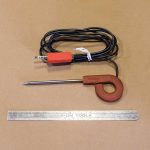
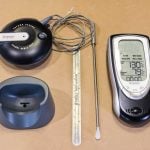
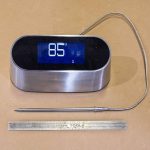
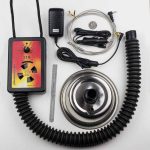
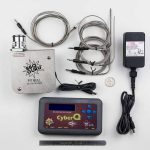

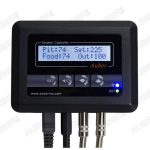
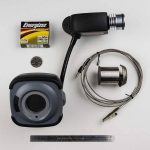
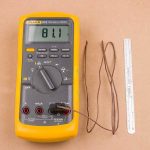
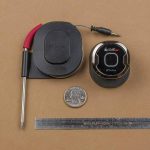
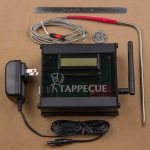
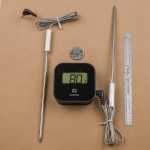





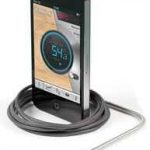


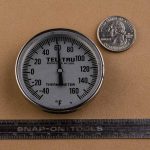
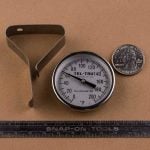
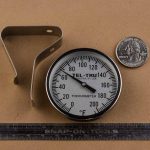
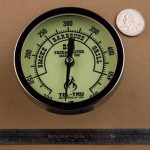
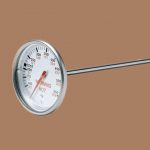

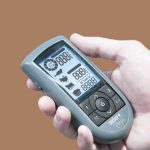
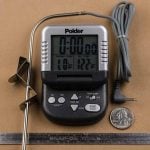


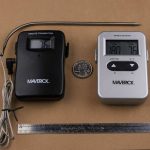
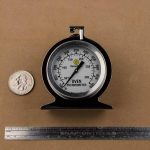
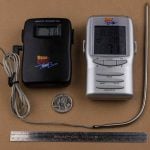


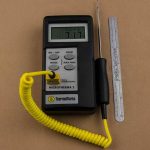
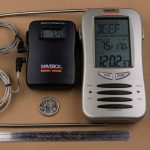

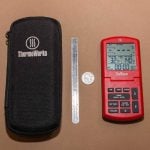
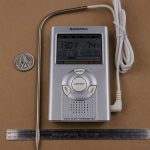
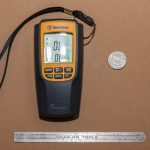


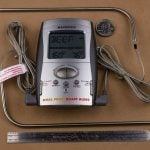


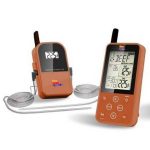
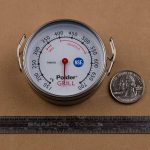
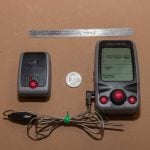
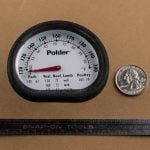

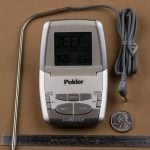
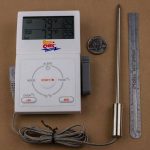
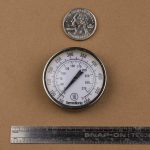


High quality websites are expensive to run. If you help us, we’ll pay you back bigtime with an ad-free experience and a lot of freebies!
Millions come to AmazingRibs.com every month for high quality tested recipes, tips on technique, science, mythbusting, product reviews, and inspiration. But it is expensive to run a website with more than 2,000 pages and we don’t have a big corporate partner to subsidize us.
Our most important source of sustenance is people who join our Pitmaster Club. But please don’t think of it as a donation. Members get MANY great benefits. We block all third-party ads, we give members free ebooks, magazines, interviews, webinars, more recipes, a monthly sweepstakes with prizes worth up to $2,000, discounts on products, and best of all a community of like-minded cooks free of flame wars. Click below to see all the benefits, take a free 30 day trial, and help keep this site alive.
Post comments and questions below
1) Please try the search box at the top of every page before you ask for help.
2) Try to post your question to the appropriate page.
3) Tell us everything we need to know to help such as the type of cooker and thermometer. Dial thermometers are often off by as much as 50°F so if you are not using a good digital thermometer we probably can’t help you with time and temp questions. Please read this article about thermometers.
4) If you are a member of the Pitmaster Club, your comments login is probably different.
5) Posts with links in them may not appear immediately.
Moderators